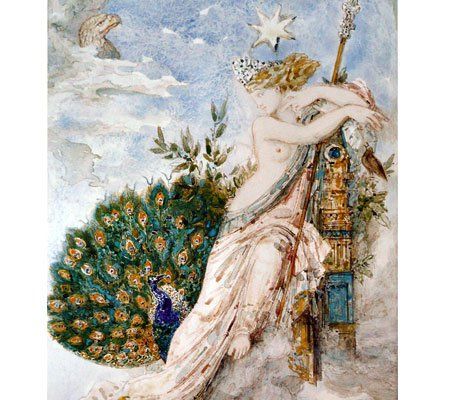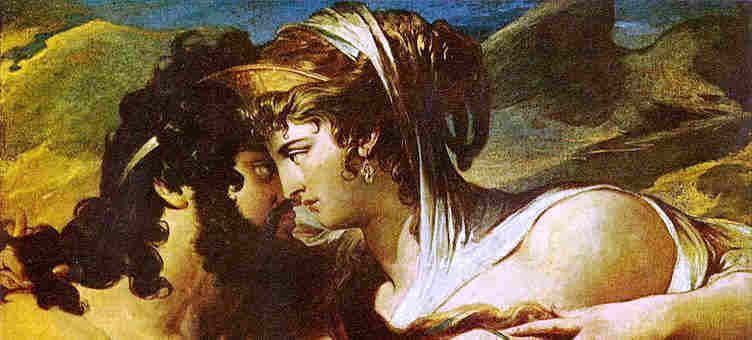|
HERA & NOW's Details
|
|
Here for:
|
Friends,
|
|
Orientation:
|
No Answer
|
|
|
 |
|
HERA & NOW is in your extended network.
|
HERA & NOW's Latest Blog Entry [Subscribe to Blog]
[View my Blog]
|
No blogs entered by user yet.
|
|
|

The cow, lion and the peac*ck were considered sacred to her. Hera's mother is Rhea and her father Cronus. Her Husband Zeus and brother with Poseidon, Hades and Vesta.

Portrayed as majestic and solemn, often enthroned, and crowned with the polos (a high cylindrical crown worn by several of the Great Goddesses), Hera may bear a pomegranate in her hand, emblem of fertile blood and death and a substitute for the narcotic capsule of the opium poppy.
Hera with baby Ares in the Underworld of Hades.
A scholar of Greek mythology Walter Burkert writes in Greek Religion, "Nevertheless, there are memories of an earlier aniconic representation, as a pillar in Argos and as a plank in Samos."[3]

Hera was known for her jealous and vengeful nature, most notably against Zeus's lovers and offspring, but also against mortals who crossed her, such as Pelias. Paris offended her by choosing Aphrodite as the most beautiful goddess, earning Hera's hatred
According to Walter Burkert, both Hera and Demeter have many characteristic attributes of pre-Greek Great Goddesses.[14]
According to the Homeric Hymn III to Delian Apollo, Hera detained Eileithyia to already prevent Leto from going into labor with Artemis and Apollo, since the father was Zeus. The other goddesses present at the birthing on Delos sent Iris, Hera's Herald to bring her. As she stepped upon the island, the divine birth began. In the myth of the birth of Heracles, it is Hera herself who sits at the door instead, delaying the birth of Heracles until her prot�g�, Eurystheus, had been born first.

The Homeric Hymn to Pythian Apollo makes the monster Typhaon the offspring of archaic Hera in her Minoan form, produced out of herself, like a monstrous version of Hephaestus, and whelped in a cave in Cilicia.[15] She gave the creature to Python to raise.
Roman copy of a Greek 5th century Hera of the "Barberini Hera" type, from the Museo ChiaramontiIn the Temple of Hera at Olympia, Hera's seated cult figure was older than the warrior figure of Zeus that accompanied it. Homer expressed her relationship with Zeus delicately in the Iliad, in which she declares to Zeus, "I am Cronus' eldest daughter, and am honorable not on this ground only, but also because I am your wife, and you are king of the gods."


Though Zeus is often called Zeus Heraios 'Zeus, (consort) of Hera', Homer's treatment of Hera is less than respectful, and in late anecdotal versions of the myths (see below) she appeared to spend most of her time plotting revenge on the nymphs seduced by her Consort, for Hera upheld all the old right rules of Hellene society and sorority.
MySpace Layouts

|
|
|
|
|